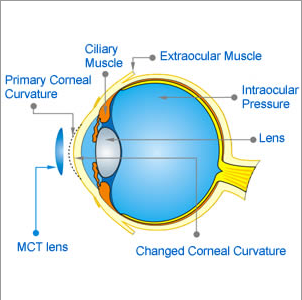MCT care shop
MCT technology orthokeratology lens for children with amblyopia
MCT technology orthokeratology lens for children with amblyopia
Normaler Preis
$400.00
Normaler Preis
$599.00
Verkaufspreis
$400.00
Stückpreis
pro
Versand wird beim Checkout berechnet
Verfügbarkeit für Abholungen konnte nicht geladen werden
Parents may not always recognize the signs of visual impairment in their children. Children rarely complain about vision problems, primarily because they often assume that everyone sees the world the same way they do.
Uncorrected vision problems can manifest in various ways, including learning difficulties and behavioral issues. Children with poor eyesight may struggle to keep up in school, leading to frustration and potentially being mislabeled as "troublemakers." This can significantly impact their academic performance, as they may experience difficulty completing assignments accurately and efficiently due to impaired vision.
Causes of poor vision during infancy and early childhood:
- Media opacities (corneal or lenticular)
- Retinal disorders (achromatopsia, leber congenital amaurosis, congenital stationary night blindness, macular diseases, foveal hypoplasia, retinopathy of prematurity, etc)
- Optic nerve disorders (hypoplasia, malformation, coloboma, congenital glaucoma)
- Nystagmus (from ocular or neurological origin)
- Systemic diseases:
- Neurologic disorders (ex. hydrocephalus)
- Metabolic disorders (ex. Lowe syndrome)
- Chromosomal abnormalities (ex. Down syndrome)
- Somatic malfunctions (ex. De Lange syndrome)
Common signs of visual problems in children are age dependent.
Infancy or early childhood:
- Holding objects close to face
- Constant eye rubbing or blinking
- Frequently tilting head to one side
- Eye turns in or out
- Persistent eye watering
- Unusually sensitive to light
- Pupils look white in person or in photographs
- Difficulty focusing or fixating on faces or toys in front of them
- Struggling to track moving objects with their eyes
Preschool period:
- Short attention span
- Easily distracted from work
- Covering an eye to prevent seeing double
- Preference of only activities requiring long or short distance vision
- Avoidance of reading or other close activities
- Sitting unusually close to the television
- Unexpected changes in behavior and preferences over time
- More frequent clumsiness, stumbling, or bumping into objects compared to other children
- Excessively clingy in new situations or environments
Early grade school:
- Constantly losing place when reading
- Frequent headaches
- Other people (ex. teachers) noticing changes in behavior or struggling with certain visual tasks
- Photophobia
- These kids may perform unsatisfactory in school or even be labeled as “troublemakers” despite their behavior actually stemming from difficulty in school due to poor eyesight.
- School assignments and tasks may be completed inefficiently or with inadequate comprehension.




